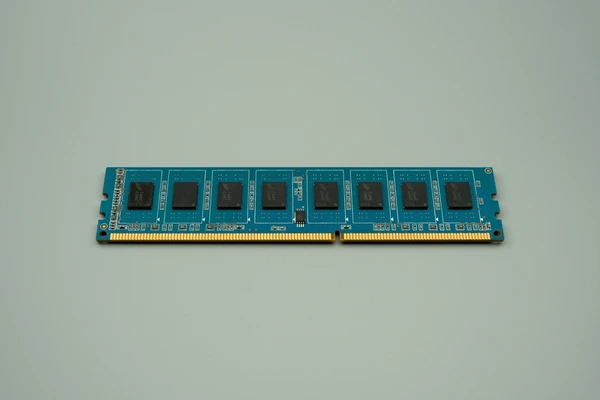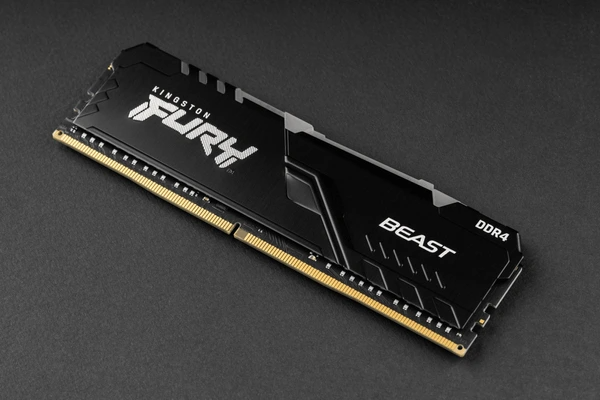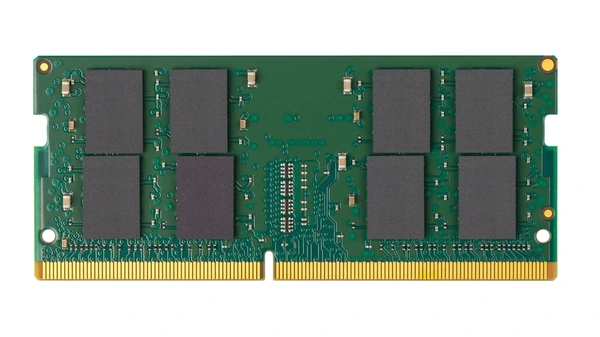
Introduction to DDR3 and DDR4
DDR4 memory is a powerful upgrade in the DDR3 vs. DDR4 comparison, offering significantly higher performance and bandwidth for modern computing needs. With data rates reaching up to 3.2 Gbps per pin, DDR4 effectively doubles the bandwidth of its predecessor. This improvement is made possible by a 16-bit prefetch mechanism, compared to the 8-bit mechanism in DDR3, and a higher core frequency. The increased bandwidth in DDR3 vs. DDR4 is crucial for supporting data-intensive applications, gaming, and high-performance computing systems, making DDR4 a vital component in today’s advanced technology landscape.
Overview of DDR3 RAM
DDR3 SDRAM (Double Data Rate 3 Synchronous Dynamic Random Access Memory) is the third generation of DDR memory technology. It delivers faster data rates and consumes less power than its predecessors, making it a key component in modern computing.
Key Features of DDR3 SDRAM
1. Higher Data Transfer Rates
DDR3 SDRAM supports data transfer rates ranging from 800 to 2133 MT/s (million transfers per second). These speeds ensure better performance for multitasking, gaming, and other demanding applications.
2. Lower Power Consumption
Operating at a reduced voltage of 1.5V, DDR3 SDRAM consumes less power than earlier DDR versions. This efficiency makes it ideal for energy-conscious systems like laptops and servers.

3. Advanced Signal Architecture
DDR3 SDRAM employs a fly-by topology for clock, address, and command signals. This design enhances signal timing and ensures reliable communication between components. Additionally, it matches trace lengths for data (DQ) and data strobe (DQS) signals, further improving performance.
4. Improved Signal Integrity
Features like dual reference voltage and dynamic on-die termination (ODT) enhance signal integrity, even at higher data rates. These technologies reduce noise and maintain stable performance during high-speed operations.
Overview of DDR4 RAM
DDR4 (Double Data Rate 4) represents the latest generation of dynamic random-access memory (DRAM) technology, delivering significant improvements over DDR3. Here’s an overview of its standout features and why it’s a game-changer for modern computing.
Key Features of DDR3 SDRAM
1. Higher Data Transfer Rates
DDR4 supports data transfer rates up to 3200 MT/s, with future upgrades targeting speeds as high as 6400 MT/s. This is a substantial leap from DDR3’s maximum of 2133 MT/s, enabling faster data processing and smoother system performance. The increased speed makes DDR4 ideal for gaming, multitasking, and high-performance computing.
2. Lower Power Consumption
Operating at just 1.2V, DDR4 consumes less power than DDR3, which runs at 1.5V. This reduction in voltage leads to lower energy consumption and less heat generation. It’s a critical improvement for energy-efficient applications like mobile devices, laptops, and data centers.
3. Increased Memory Density
DDR4 offers higher memory densities, with chip sizes ranging from 4 Gb to 16 Gb. This enables larger memory capacities in smaller physical sizes, making it easier to design compact and efficient systems. It’s a significant advantage for devices where space is a premium.
4. Enhanced Error Correction
Advanced error correction mechanisms, such as Cyclic Redundancy Check (CRC) and Command/Address Parity, are built into DDR4. These features improve data reliability and integrity, making DDR4 essential for mission-critical applications and high-performance computing environments.

5. Bank Group Architecture
DDR4 introduces a bank group architecture, grouping memory banks together to optimize performance and reduce latency. This design allows for faster and more efficient memory access, ensuring better utilization of available bandwidth.
6. Improved Refresh Modes
With new refresh modes like “same-bank refresh” (REFsb), DDR4 handles memory refreshing more efficiently. These modes reduce the performance impact typically caused by traditional “all-bank refresh” methods, further enhancing system responsiveness.
7. Compatibility and System Requirements
To benefit from DDR4’s capabilities, users need compatible hardware, including a motherboard, CPU, and memory controller designed for DDR4. However, it’s important to note that DDR4 is not backward-compatible with DDR3, requiring a complete system upgrade for adoption.
DDR3 vs. DDR4: Key Differences
1. Speed and Bandwidth
DDR4 delivers much higher data rates and bandwidth compared to DDR3. It operates at a base frequency of 1600 MHz, with data rates reaching up to 3200 MT/s. In contrast, DDR3 maxes out at 1600 MT/s. This improved performance is achieved with a 16-bit prefetch per transfer cycle, double the 8-bit prefetch of DDR3. As a result, DDR4 supports faster data transfer, boosting performance in memory-intensive tasks like gaming, video editing, and scientific computing.
2. Power Efficiency and Energy Savings
Operating at just 1.2V, DDR4 consumes significantly less power than DDR3, which requires 1.5V. DDR4 also incorporates advanced power-saving features like deep power-down mode and data bus inversion (DBI) to further reduce I/O power consumption. Together, these innovations lower overall power usage by up to 40%, making DDR4 ideal for energy-efficient systems such as laptops, data centers, and enterprise servers.
3. Cost Considerations
Initially, DDR4 memory was more expensive per gigabyte than DDR3 due to its newer technology. However, as DDR4 production has scaled, prices have become more competitive. That said, upgrading to DDR4 may involve additional costs, as it requires compatible motherboards, memory controllers, and other components. While the initial investment might be higher, the long-term benefits in performance and energy savings often outweigh the costs.

4. Data Integrity and Reliability
DDR4 enhances data integrity with advanced error detection and correction features, such as cyclic redundancy check (CRC) and parity checking. These mechanisms ensure reliable data transmission and are particularly important for mission-critical applications and high-performance computing, where data accuracy is essential.
5. Capacity and Density
DDR4 memory modules support much higher densities, offering capacities of up to 64GB per DIMM. In comparison, DDR3 modules are limited to 16GB per DIMM. This increased capacity allows DDR4 to handle larger memory footprints, making it a perfect fit for applications like data analytics, machine learning, and scientific simulations that require extensive memory resources.
When to Upgrade from DDR3 to DDR4
1. Performance Demands
If your current setup struggles with memory-intensive tasks like gaming, video editing, or data analytics, upgrading to DDR4 can provide a noticeable performance boost. DDR4’s higher bandwidth and faster data transfer rates enable smoother multitasking and better system responsiveness.
2. Energy Efficiency Goals
For laptops, servers, or systems with high energy usage, switching to DDR4 can reduce power consumption. Its lower operating voltage and advanced power-saving features make it ideal for energy-conscious users looking to lower electricity costs or extend battery life.
3. Future-Proofing Your System
If you plan to keep your system for several years, upgrading to DDR4 is a wise investment. As DDR4 becomes the standard, software and hardware will increasingly optimize for its performance, ensuring compatibility and better long-term performance.
4. Expanding Memory Capacity
When your applications demand more memory than DDR3 can support, DDR4 is the logical choice. With module capacities reaching up to 64GB per DIMM, DDR4 is better equipped for modern workloads requiring extensive memory resources.
5. Hardware Compatibility
Consider upgrading if you are building a new system or your current motherboard and CPU already support DDR4. Since DDR4 is not backward-compatible with DDR3, upgrading requires a motherboard and CPU designed for DDR4 memory.
To get detailed scientific explanations of DDR3 vs. DDR4, try Patsnap Eureka.

